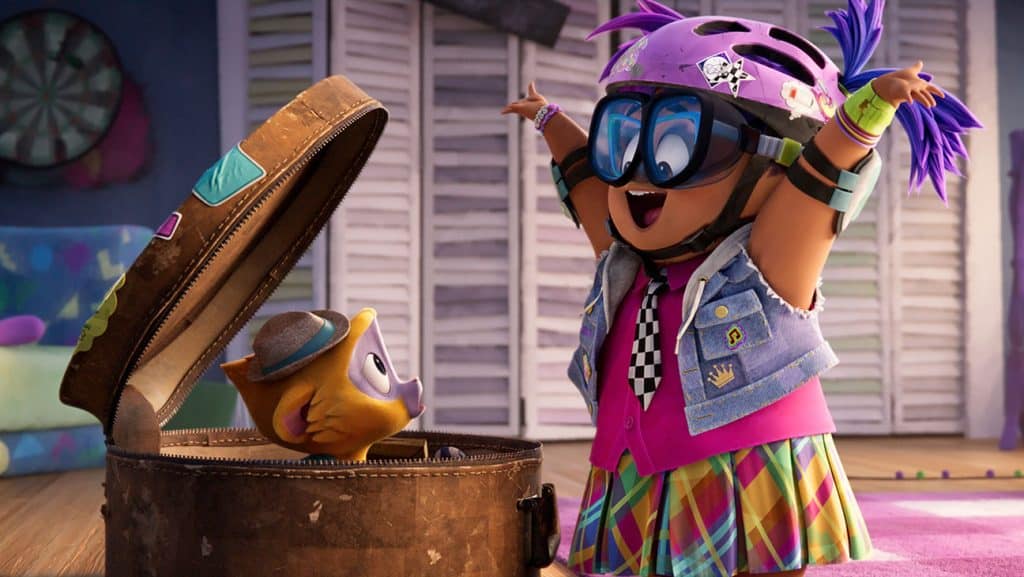Read also:
How to Watch FX Live Without CableHow To Watch AMC Without CableHow to Watch ABC Without CableHow to Watch Paramount Network Without CableLin-Manuel Miranda fronts a fun but occasionally frenetic and overly busy cartoon musical.
Vivo, the third Sony Pictures Animation film on Netflix this year, certainly opens on a promising note. We get a full scope of a pristine, modern Cuban setting, awash in warm, vibrant colors and a more textured approach to characters compared to their previous, still-admirable effort, Wish Dragon, though still a milestone away from The Mitchells vs. the Machines, one of the best movies of the entire year. Then, well, Lin-Manuel Miranda starts rapping.
The entire movie works this way. Once it settles into a pleasant enough groove, some wildcard creative decision throws the whole song out of tune. Miranda actually pitched a version of this movie’s concept more than a decade ago to DreamWorks Animation. It was eventually acquired by Sony and developed by Kirk DeMicco (The Croods) as director and co-screenwriter along with Quiara Alegría Hudes (In the Heights), based on a story idea by Peter Barsocchini (the High School Musical series).
If all of that sounds like quite the chaotic mash up of music and storytelling potential, then you’re geared up for your first viewing of Vivo. The film centers around a music-loving kinkajou named Vivo (Miranda), who abruptly leaves his imaginative, striking Cuban setting for…Florida. Though he’s initially sharing the screen with his wise and lovable owner Andrés (Juan De Marcos González), he’s later partnered up with the more grating Gabi (Ynairaly Simo), Andrés’s American niece who goes by the beat of her own drum so forcefully, the film finds it necessary to pound it into our heads through more than one jarring musical number, catchy as it is in its own right.
The purpose of their journey is borne of a longtime romance. Decades ago, Andrés wrote a song for Marta (Gloria Estefan), the woman who got away, quite literally, as she is now a famous singer preparing for her farewell performance in Miami. Unable to deliver the song himself, Vivo and Gabi take it upon themselves to brave such vast, unpredictable locations as a Key West boardwalk and the Everglades. And that’s actually about it.

The main draw of Vivo is its music, which admittedly has more hits than misses. When Miranda is allowed to sing, not spit lighter fluid, the energy flows far more gracefully between song and animation. The rapping? It’s bizarre and tasteless enough to make some viewers question Miranda’s creative choices post-Hamilton, as it borrows far too many refrains and tired tricks to stand out. In other words, it rings as overplayed, combined with Miranda’s somewhat stilted vocal performance, here, which fails to fully sync up with the main character in any lasting way. Put more simply, this kinkajou has way too much youthful personality in its design for Miranda’s trying-too-hard-to-sound-upbeat tenor.
Even at its most basic, Vivo certainly maintains a high level of striking visuals and thrilling animation along its breezy adventure. A villainous python voiced by Michael Rooker gets a particularly memorable beat, and some of the emotional writing between Gabi and her mother, Rosa (Zoe Saldana), hits the intended notes. But very little of Vivo is all that remarkable, mainly because it comes off as a cover song for deeper, more original musicals highlighting Latine culture.
Once it settles into a pleasant enough groove, some wildcard creative decision throws the whole song out of tune.
It makes sense for Hollywood to continually center its Latine representation around music, especially for kid-focused projects. It avoids the uncomfortable conversations around immigration, American intervention, and appropriation, because if there’s one thing Americans love about our culture, it’s our unique and infectious music, combined with the life and energy of our dancing.
Vivo builds itself around these ideas of bringing people of different backgrounds together through mainstream, crowd-pleasing filmmaking, much like Pixar’s Coco and Fox’s The Book of Life. To its credit, the film attempts to circumvent the usual Latine tropes by normalizing the mixture of cultures in places like Miami. Where it can be a given for an American child with a Latine background to have many different loves outside of the ones explicitly connected to the usual stereotypes.
So in that sense, it’s easy to celebrate Vivo as a good enough marker for how far animation and representation has come in 2021. Even if it is unfortunately saddled with some regrettable key changes. And, yes, the rapping.
Vivo premieres on Netflix August 6th.